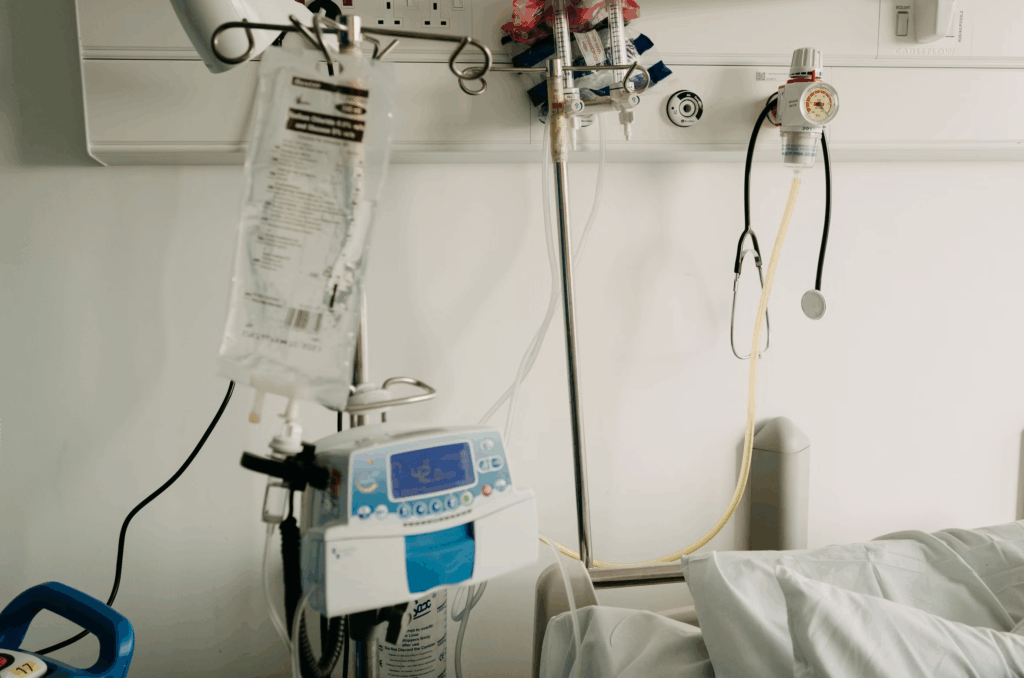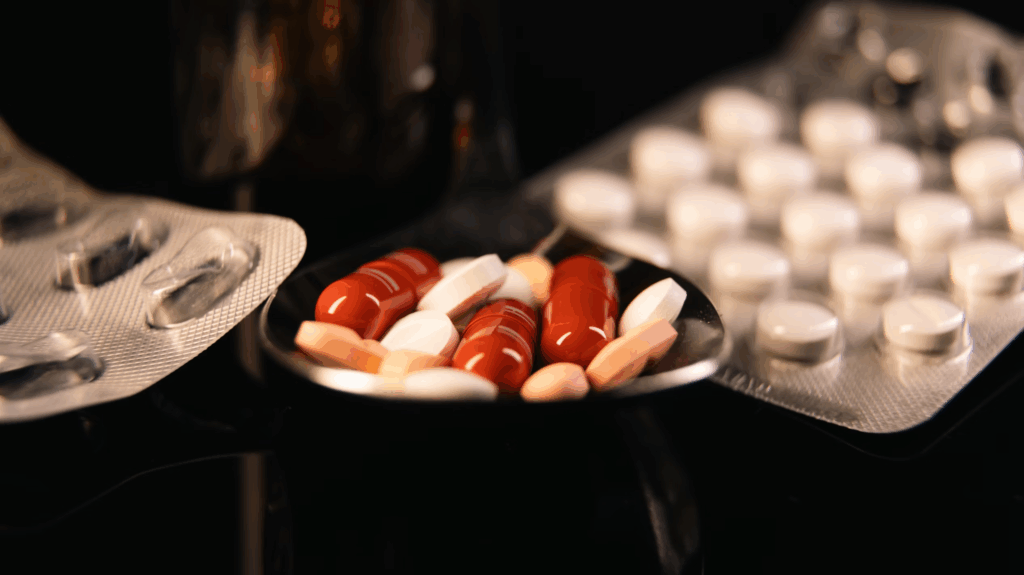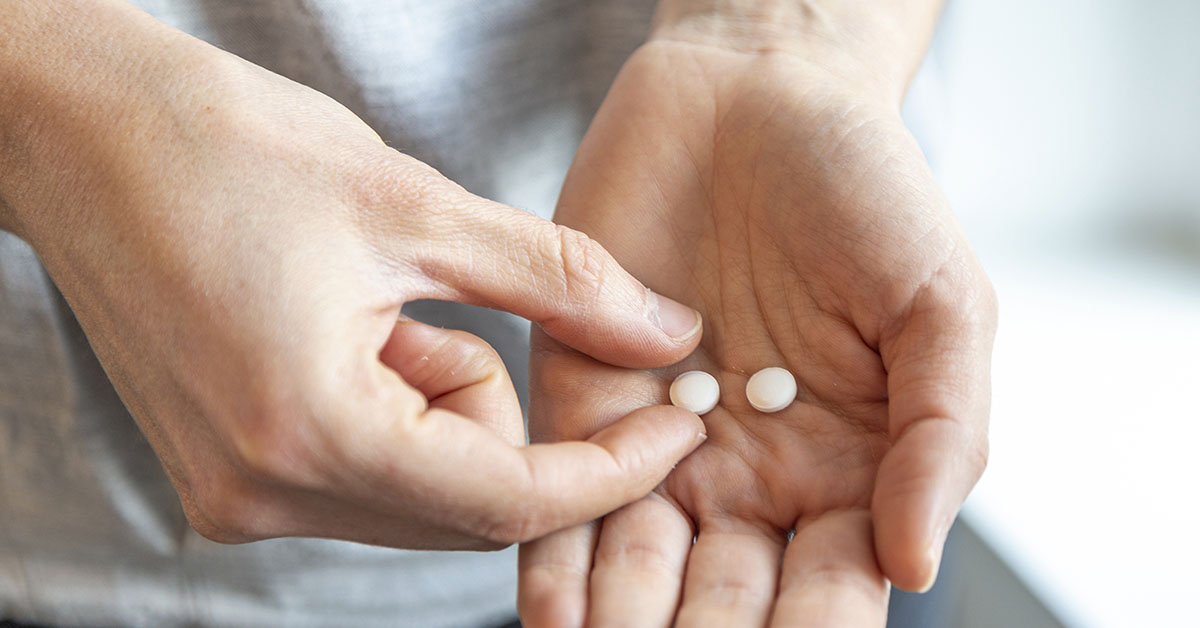Aleshia Rogers had recently given birth by C-section and was recovering at home when she reached for ibuprofen. Like many people, she trusted it as a safe way to manage pain. At first, she noticed flu-like symptoms, including a fever and a sore throat. Her eyes became red and irritated, which doctors thought was pink eye. Soon after, a rash appeared across her chest that continued to spread. The situation quickly became alarming, but she did not expect the pain reliever she had taken for years to be the cause. Within hours, her skin began blistering and peeling.
Misdiagnosis Delayed the Truth
Doctors first suspected scarlet fever, a strep infection, or even an eye condition, but none of those matched what was happening. Because ibuprofen is such a common medicine, no one initially connected it to her reaction. Aleshia continued to take the drug, unaware of the danger. The blistering and peeling grew worse, leaving her face swollen and painful. Her family could barely recognize her and rushed her back to the hospital. It was then that specialists realized she was experiencing Stevens-Johnson syndrome. The rare reaction had already advanced into its most dangerous stage. Early misdiagnosis meant the illness had time to spread throughout her body.
Fighting for Her Life in Intensive Care
Once doctors understood what was happening, they moved her to a burn unit for immediate treatment. Stevens-Johnson syndrome had progressed into toxic epidermal necrolysis, which causes large sections of skin to fall away. Ninety percent of her skin was destroyed by the reaction. She developed sepsis, her organs began shutting down, and her life hung in the balance. Doctors placed her into a medically induced coma to give her body a chance to recover. Over the next three weeks, surgeons performed skin grafts and protected her eyes with special transplants. Her survival odds were frighteningly low, but she managed to pull through.

The Road Back to Recovery
After a month in the hospital, Aleshia was able to return home, but her life is not the same. She lost memory of her baby’s birth and the first moments of motherhood. Her skin remains fragile, and she continues to manage lingering effects from the illness. Despite the challenges, she says she feels grateful to be alive. Her family sees her survival as a miracle, considering the severity of her condition. Aleshia is determined to move forward and raise awareness so others recognize the warning signs sooner. She admits she now lives with caution, but she refuses to live in fear.
Understanding Stevens-Johnson Syndrome
Stevens-Johnson syndrome, often shortened to SJS, is a rare but extremely serious disorder of the skin and mucous membranes. It is most often triggered by a reaction to medications, including antibiotics, anticonvulsants, and nonsteroidal anti-inflammatory drugs such as ibuprofen. In some cases, infections like pneumonia or herpes simplex virus can also act as triggers. Because the syndrome is so uncommon, affecting only about one to two people per million each year, many doctors may only encounter a handful of cases in their entire careers. This rarity contributes to frequent misdiagnosis, especially during the earliest stages.
The condition often begins with vague symptoms that look like the flu. Patients may experience fever, sore throat, cough, and burning eyes before any rash appears. Within a few days, red or purple skin patches spread across the body and develop into painful blisters. The top layer of skin then begins to die and peel away, leaving raw, exposed tissue. When more than ten percent of the skin is affected, it is classified as SJS. Once the affected area passes thirty percent, it becomes toxic epidermal necrolysis, or TEN, which is considered life-threatening.
Both SJS and TEN require immediate hospitalization, typically in intensive care or specialized burn units. Treatment focuses on stopping the offending medication, managing pain, and preventing infection in the exposed skin. Mortality rates vary depending on severity, with SJS having a death rate of around five to ten percent, while TEN can reach thirty percent or higher. Survivors often face long recoveries and ongoing complications, including vision loss, scarring, and chronic skin sensitivity.
Because early signs resemble common viral infections, awareness is critical. Patients and doctors must pay close attention to sudden rashes, blistering, or peeling skin, particularly when new medications have recently been started. Prompt recognition and emergency care dramatically improve survival chances. While SJS is rare, its potential severity means that even commonly used medicines can carry very real risks for certain individuals.

Why Awareness Saves Lives
Although Stevens-Johnson syndrome is rare, its consequences are devastating. Many patients are first misdiagnosed because early symptoms mimic common illnesses. Recognizing the progression quickly can mean the difference between recovery and death. Anyone who develops blisters, rashes, or skin peeling after taking medication should seek urgent medical care. Families and patients must push for answers when something feels wrong. By sharing her story, Aleshia hopes to prevent others from going through the same nightmare. Her experience reminds us that even trusted medications deserve respect and careful attention.
Disclaimer: This article was created with AI assistance and edited by a human for accuracy and clarity.
Read More: The Side Effects of Ibuprofen You May Not Be Aware Of

